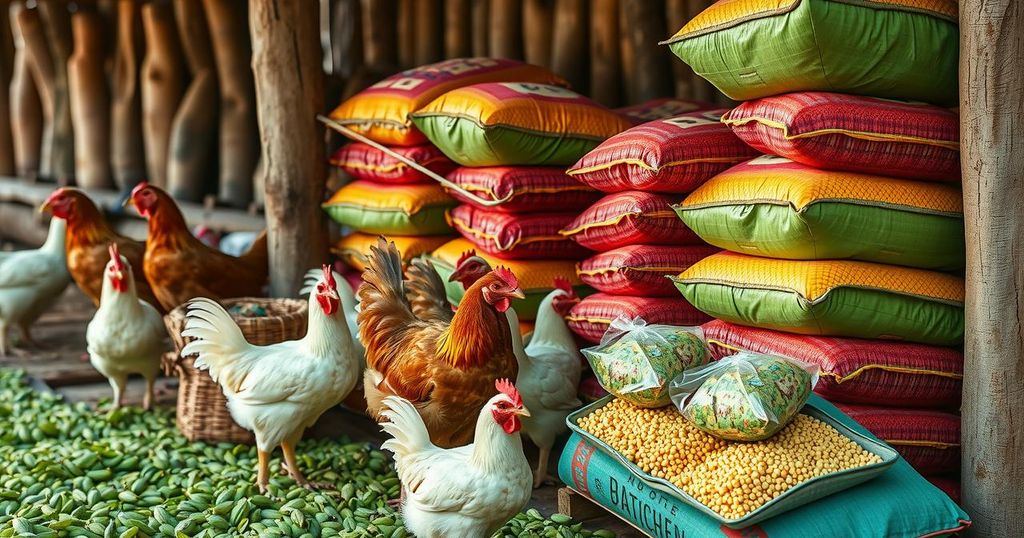Impact of High Soybean Prices on Poultry Production in Zambia and Malawi
High soybean prices in Zambia and Malawi, driven by low production and lack of market competition, threaten poultry production, which is a crucial protein source in East and Southern Africa. The analysis reveals that the concentration of buyers influences prices negatively, impacting small-scale farmers and food security in the region. The situation necessitates urgent regional cooperation to improve market resilience and support independent producers.
Poultry is an essential protein source for the growing populations in East and Southern Africa, and soybeans play a critical role in ensuring food security in the region as a primary ingredient in chicken feed. Recent challenges in soybean pricing and production are threatening poultry production in Zambia and Malawi, where feed costs constitute the majority of poultry production expenses, affecting affordability and competitiveness of producers, especially small-scale independent poultry farmers.
Zambia and Malawi are major soybean producers in East and Southern Africa, but both countries experienced significant production declines in 2024 due to adverse climate conditions and market maneuverings that have impacted farmers. In Zambia, production dropped by 74% as farmers faced pressure from low prices offered by large buyers, leading to decreased planting. Malawi’s production fell by 20% but saw an extraordinary price surge that exceeded production levels, causing concern regarding the high pricing dynamics within the market.
According to the African Market Observatory, which supervises staple food pricing and conducts market research, competition problems, namely the influence of larger buyers on prices and substantial profit margins, are contributing to escalating prices and diminished production levels in both countries. Furthermore, climate events exacerbate these issues, indicating a broader need for a resilient value chain from feed to poultry rearing.
The poultry sector is regarded as one of the most environmentally sustainable protein sources, yet recent trends demonstrate vulnerabilities within the supply chain. As demand for poultry in sub-Saharan Africa is expected to triple by 2050, farmers require affordable feed, and small-scale producers are particularly disadvantaged. High feed prices in Malawi have led to negative profit margins, threatening the competitiveness of the local poultry industry.
In Zambia, soybean production rose considerably between 2020 and 2023 but witnessed a drastic decline in 2024, primarily due to low prices negotiated by processors that discouraged plantings. Moreover, farmers tend to sell their crops shortly after harvest to traders due to insufficient storage options, reducing their leverage in price negotiations. Derivatives from the El Niño phenomenon during the 2023/24 season also contributed to crop failures.
Malawi’s soybean prices surged dramatically, hitting over $900 per tonne in late 2024, largely disconnected from local production levels. This situation highlighted the detriments of a concentrated market, where limited price competition results in inflated prices. By contrast, Zambia’s prices have stabilized owing to imports and reduced local demand, evidencing the market’s interconnectivity.
Given the recent developments, there is a pressing need to address competition issues affecting food markets. Zambia’s poultry market is currently undergoing an inquiry, yet a more extensive collaborative approach to market monitoring and addressing anti-competitive behaviors across the region is imperative for bolstering poultry production.
In summary, the soybean pricing crisis in Zambia and Malawi directly threatens the affordability and competitiveness of poultry production, which is vital for food security in East and Southern Africa. The dynamics of the market—particularly the lack of competition and the influence of large buyers—significantly impact small-scale farmers. The need for diversified solutions and regional cooperation to enhance market resilience is evident as the poultry industry prepares for predicted growth in demand.
Original Source: theconversation.com




Post Comment